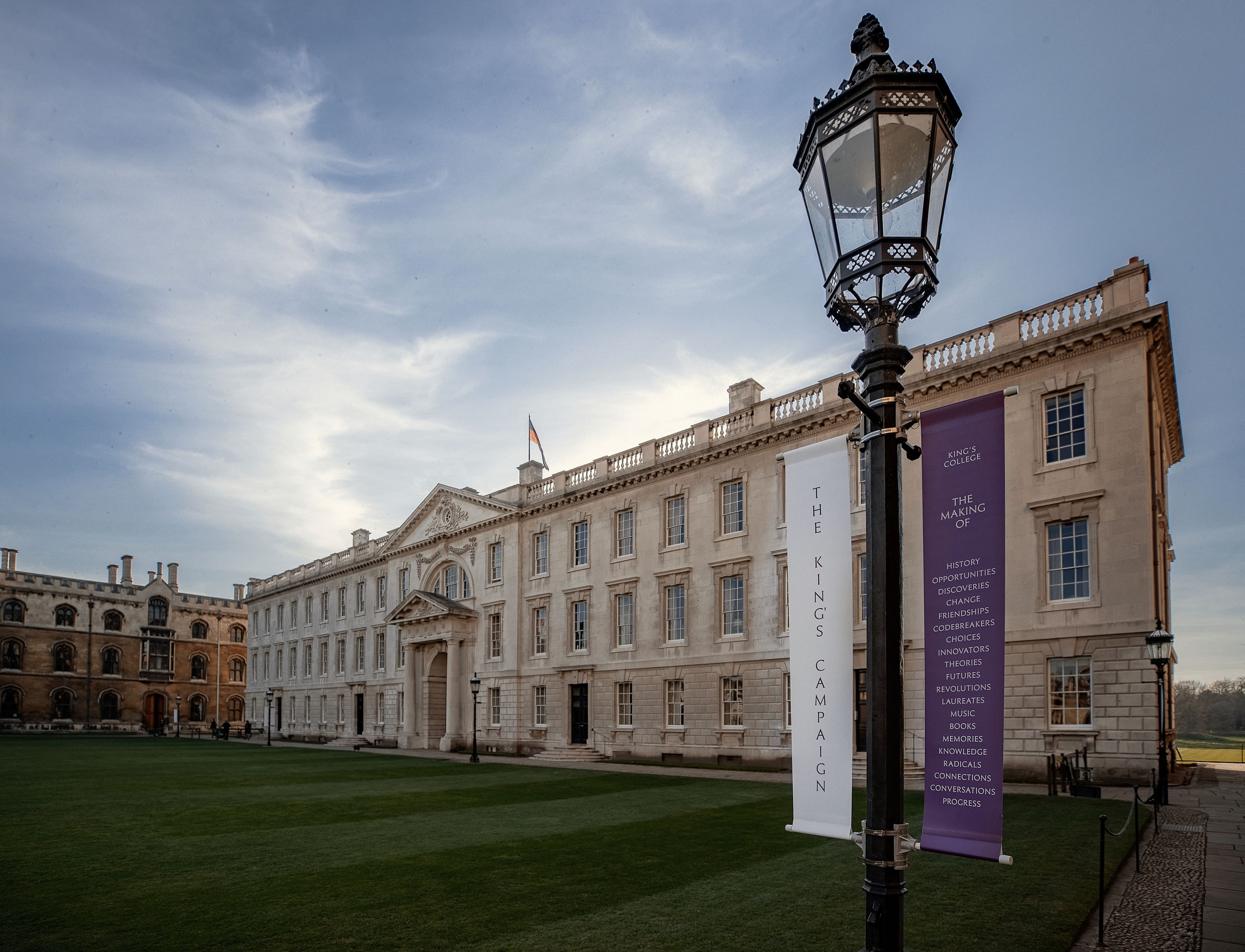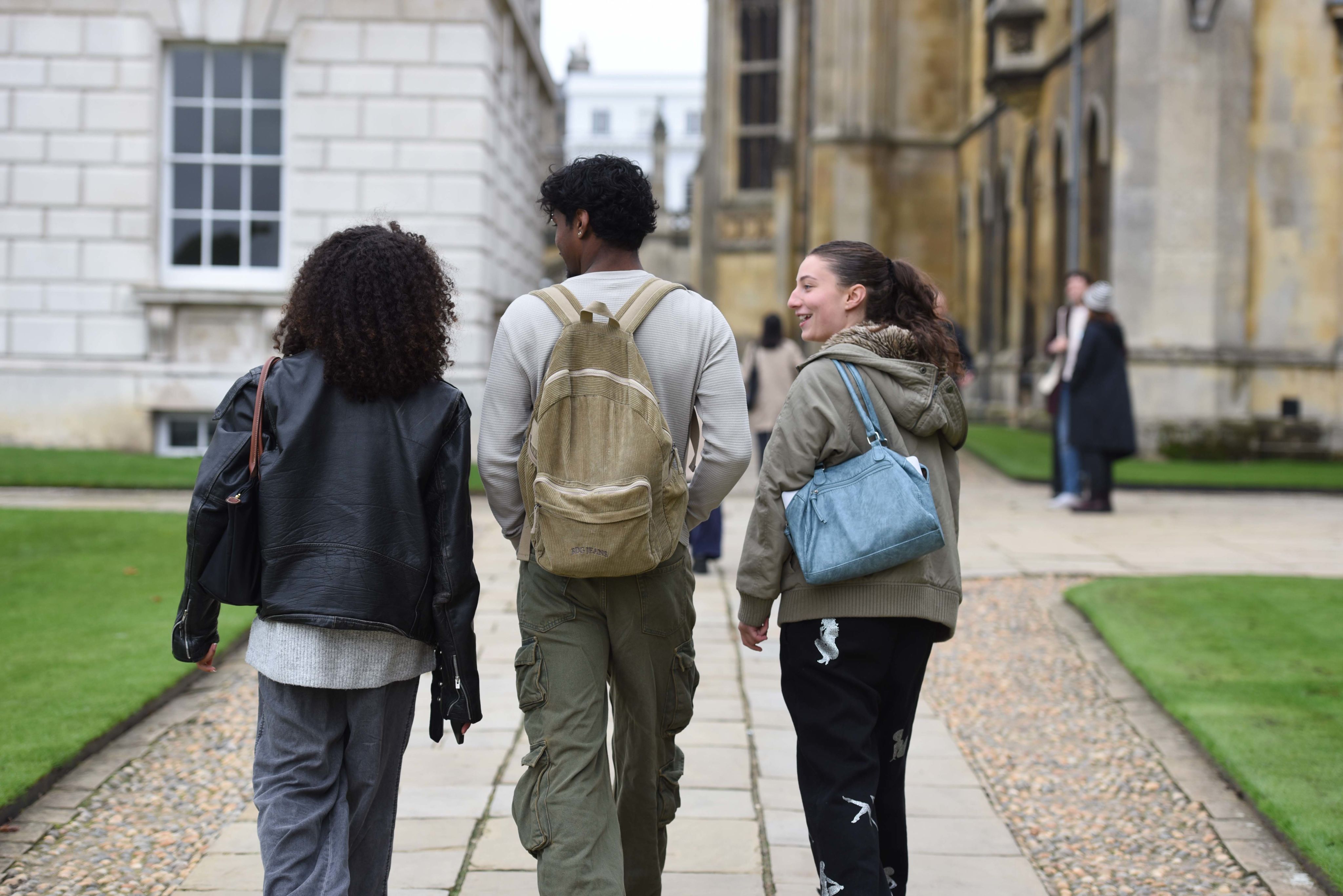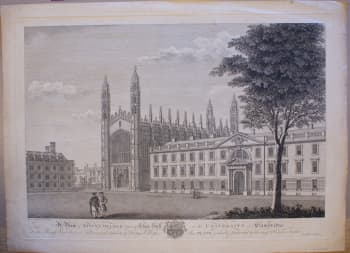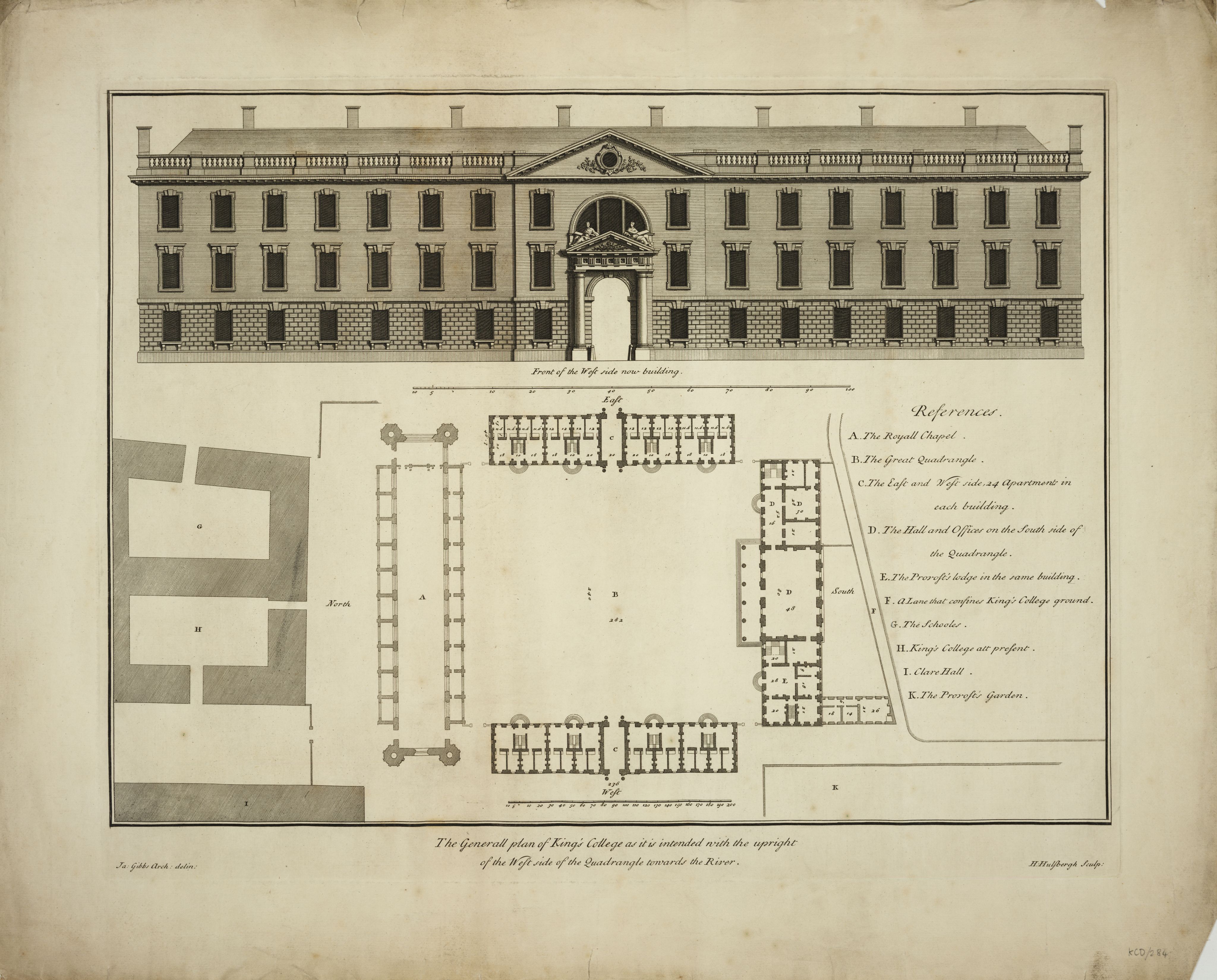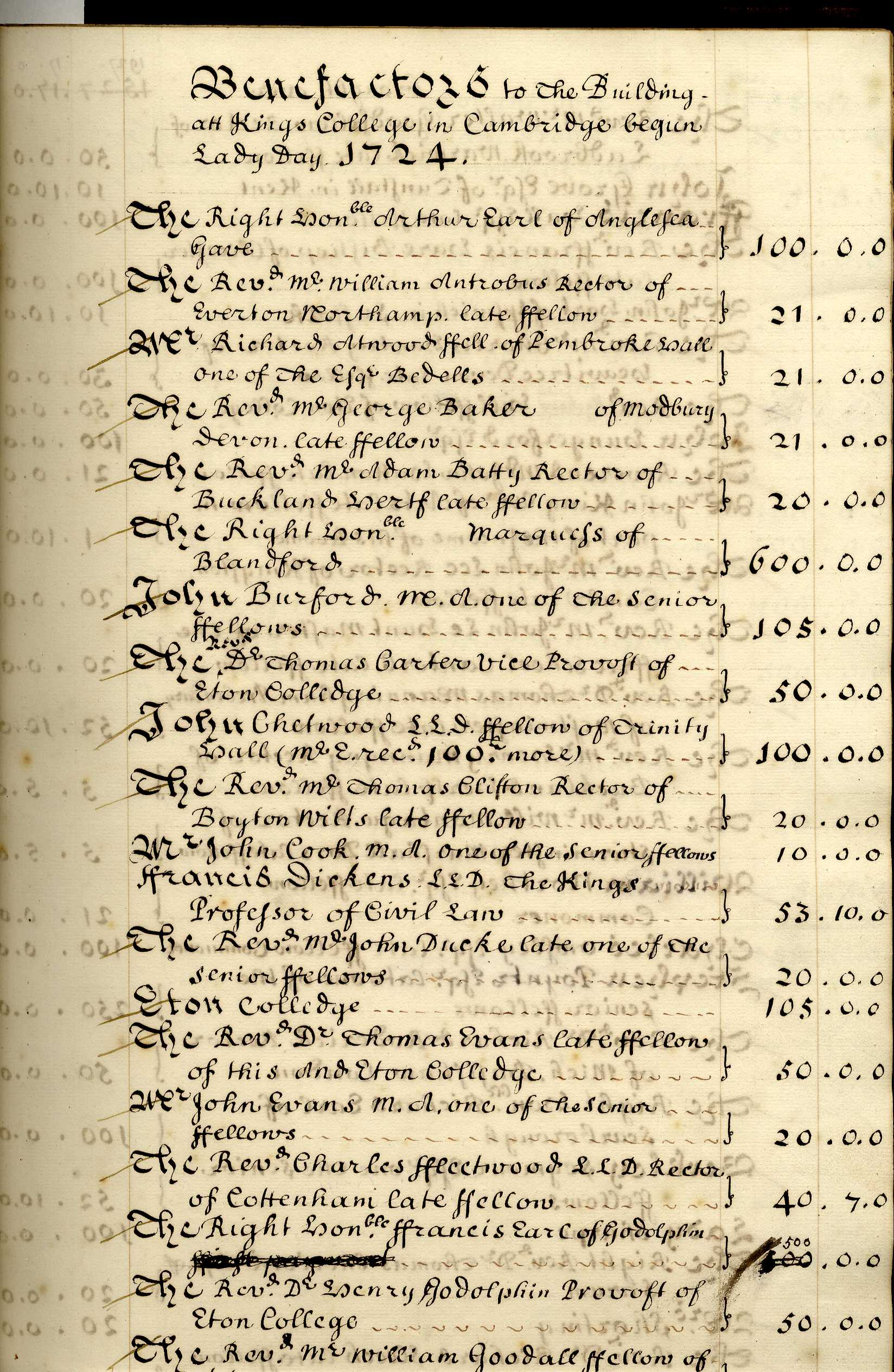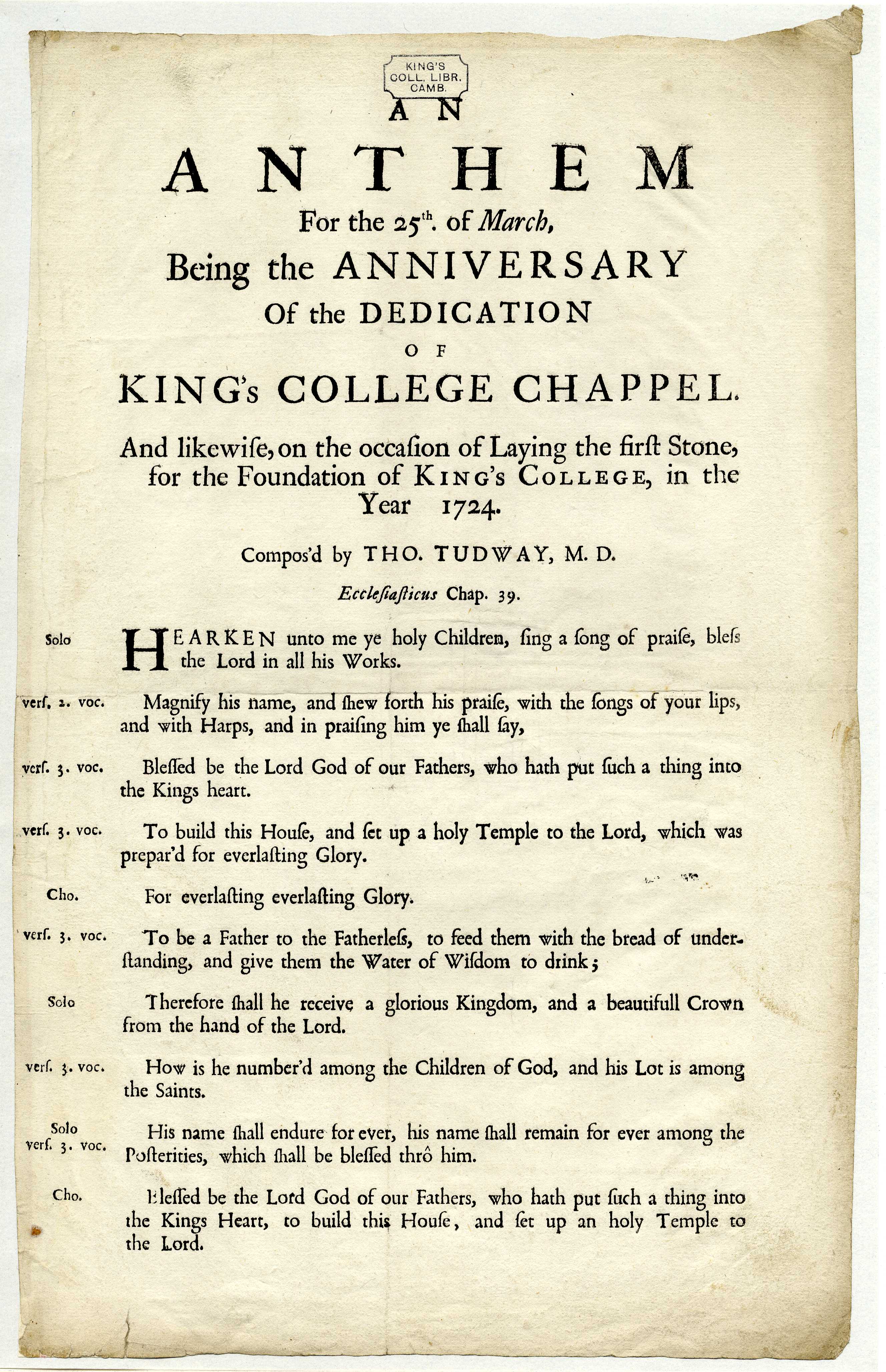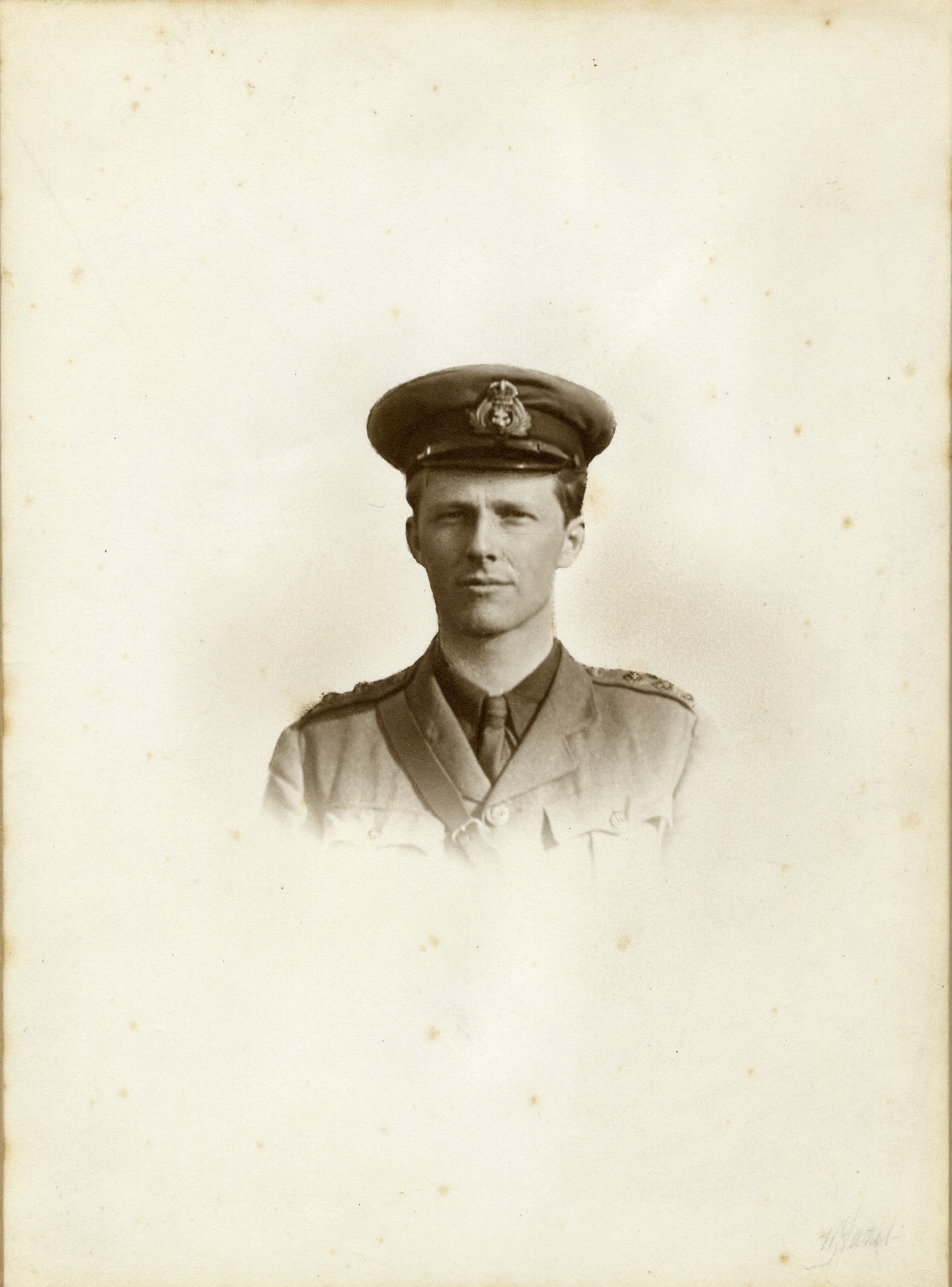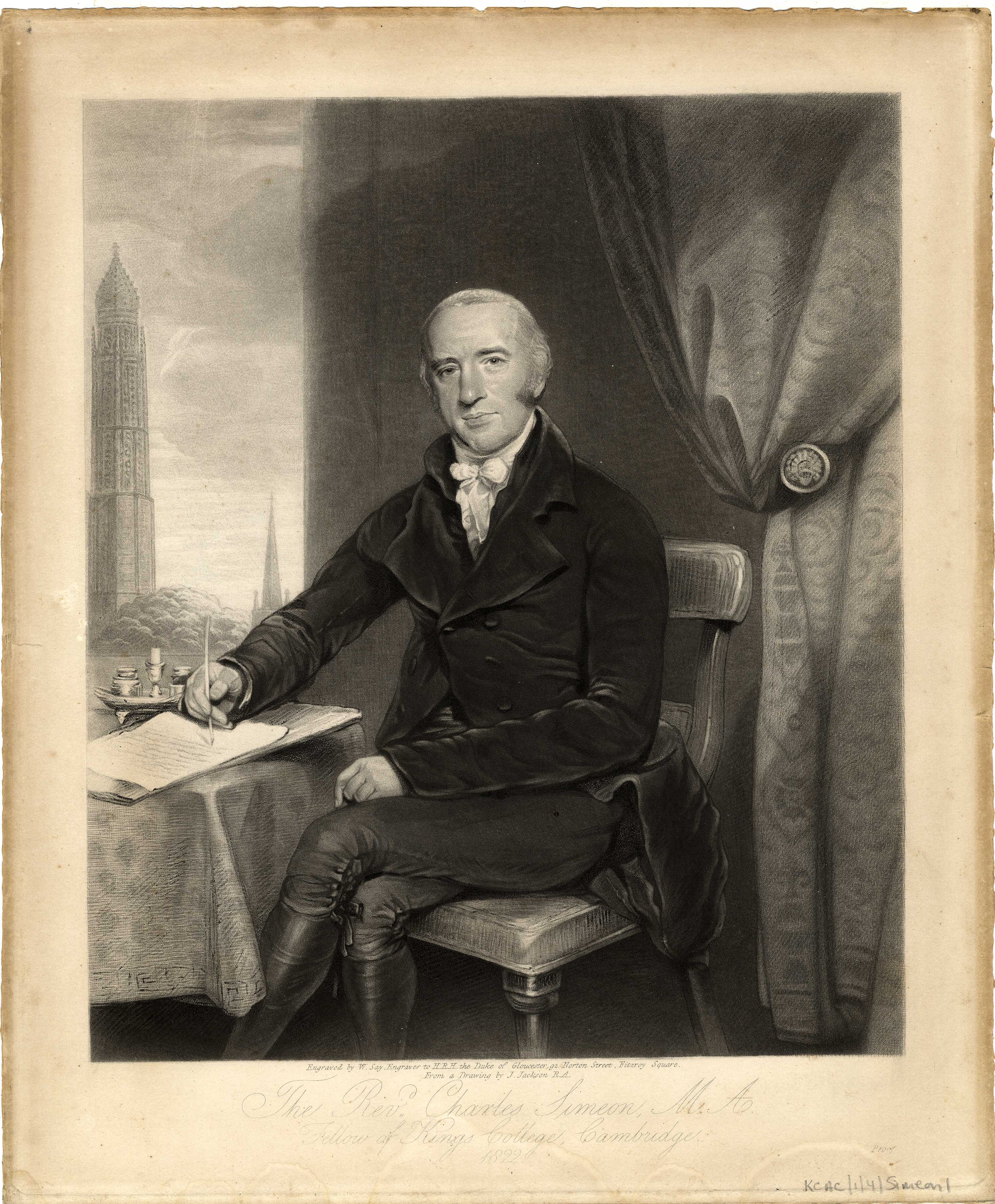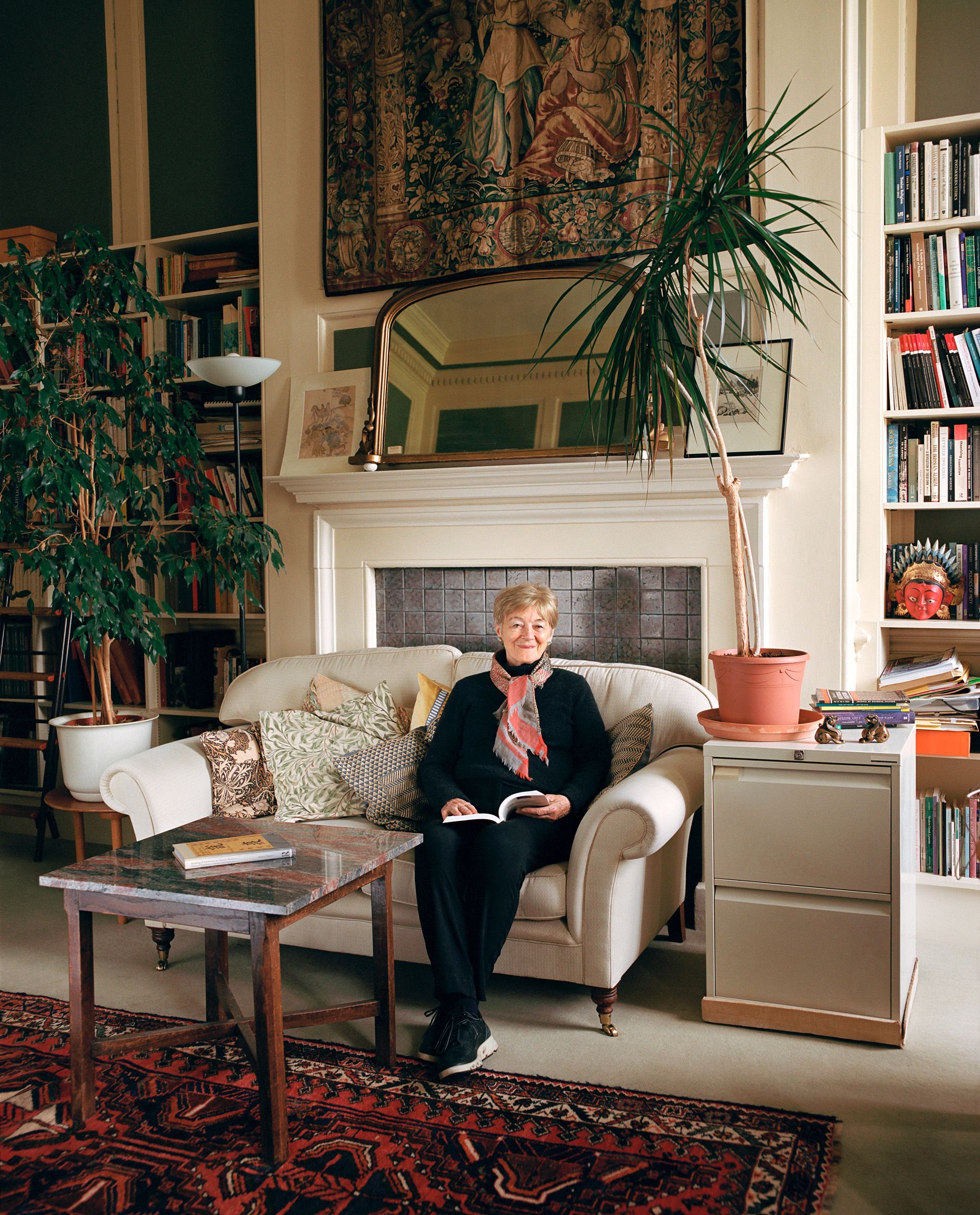Gibbs 300
The iconic building at the heart of King's celebrated its tercentenary in 2024
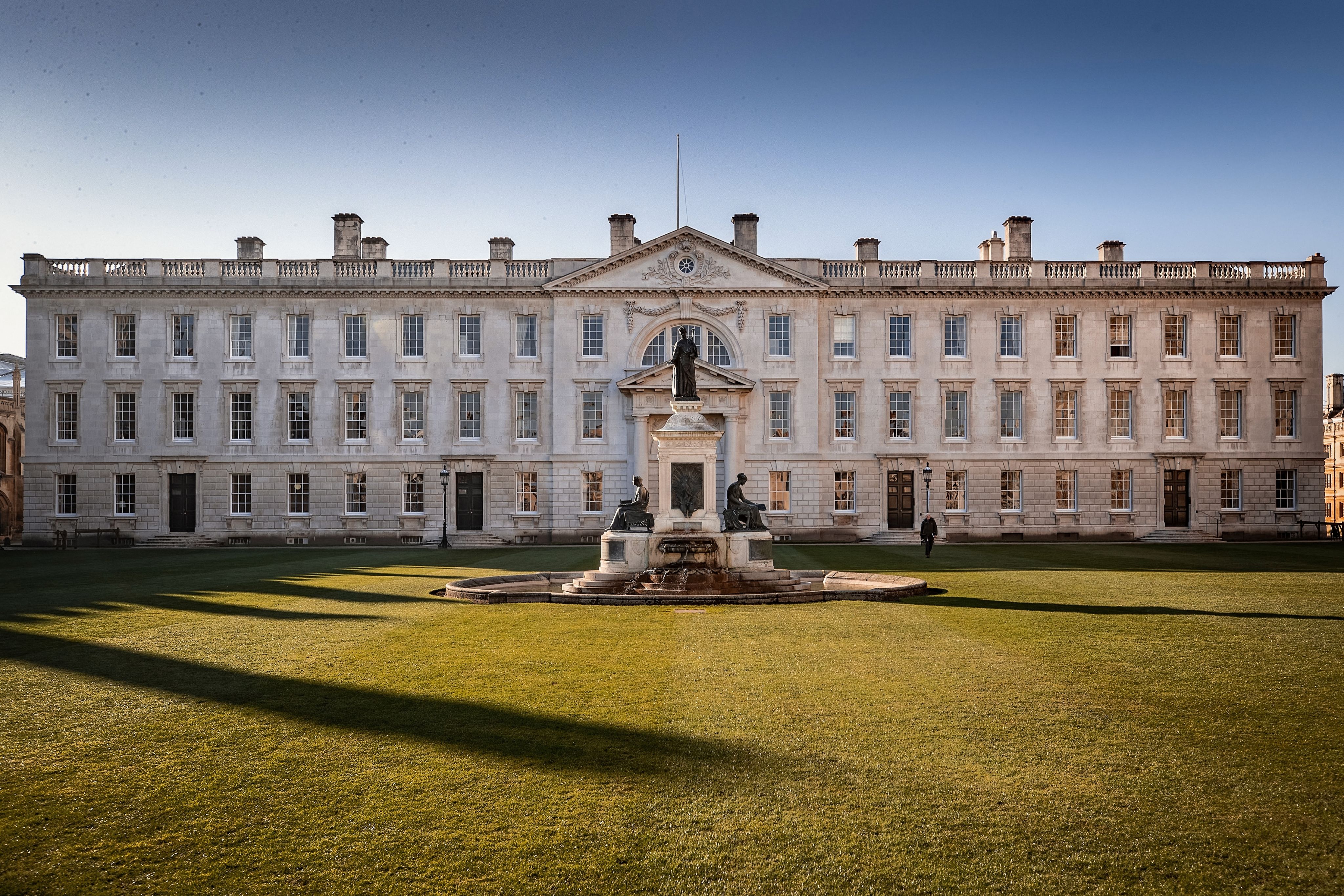
Last year the Gibbs Building turned 300.
Throughout the year King’s celebrated the past three centuries of Gibbs and the men and women who have lived and worked here, and looked ahead to its future.
An 18th century engraving by Lamborn depicting 'King's College, New Building, Cambridge' (GIB-36 KCD-146)
An 18th century engraving by Lamborn depicting 'King's College, New Building, Cambridge' (GIB-36 KCD-146)
Gibbs sits at the heart of King’s. Of great historic, architectural and cultural significance, it is the College’s second-oldest building and a Grade I listed world-class heritage asset. With the Chapel it creates one of Cambridge’s most iconic views, recognised by millions around the world.
But Gibbs is more than just a historic building. Over the years it has been a place of creativity, discovery, innovation and endless conversation. And for generations of King’s students, it’s where the first nerve-wracking admissions interview took place, where supervisions – terrifying or inspiring – happen, and where lifelong connections have been made.
"I arrived at King’s in 1982 as a postgraduate student from Dublin. When I first met him I told Nick Bullock, the graduate tutor, that Gibbs was my favourite building in King’s. He said he was not in the least bit surprised as Gibbs was so like other buildings in Dublin. Of course he was right! I now even have an engraving of the Gibbs Building, drawn and engraved by J. Greig, hanging in my house."
The story of the Gibbs Building goes back to the earliest years of the College, and the original vision of founder Henry VI.
Although technically the first stone of Gibbs was laid in 1461 when masons working on the Chapel left behind a large block of stone in the Front Court, Henry VI’s original intention for a ‘Great Court’ in his College was derailed by the Wars of the Roses and the Chapel’s building costs. The work of completing the project only taken up in earnest by Provost John Adams, soon after his election in 1712.
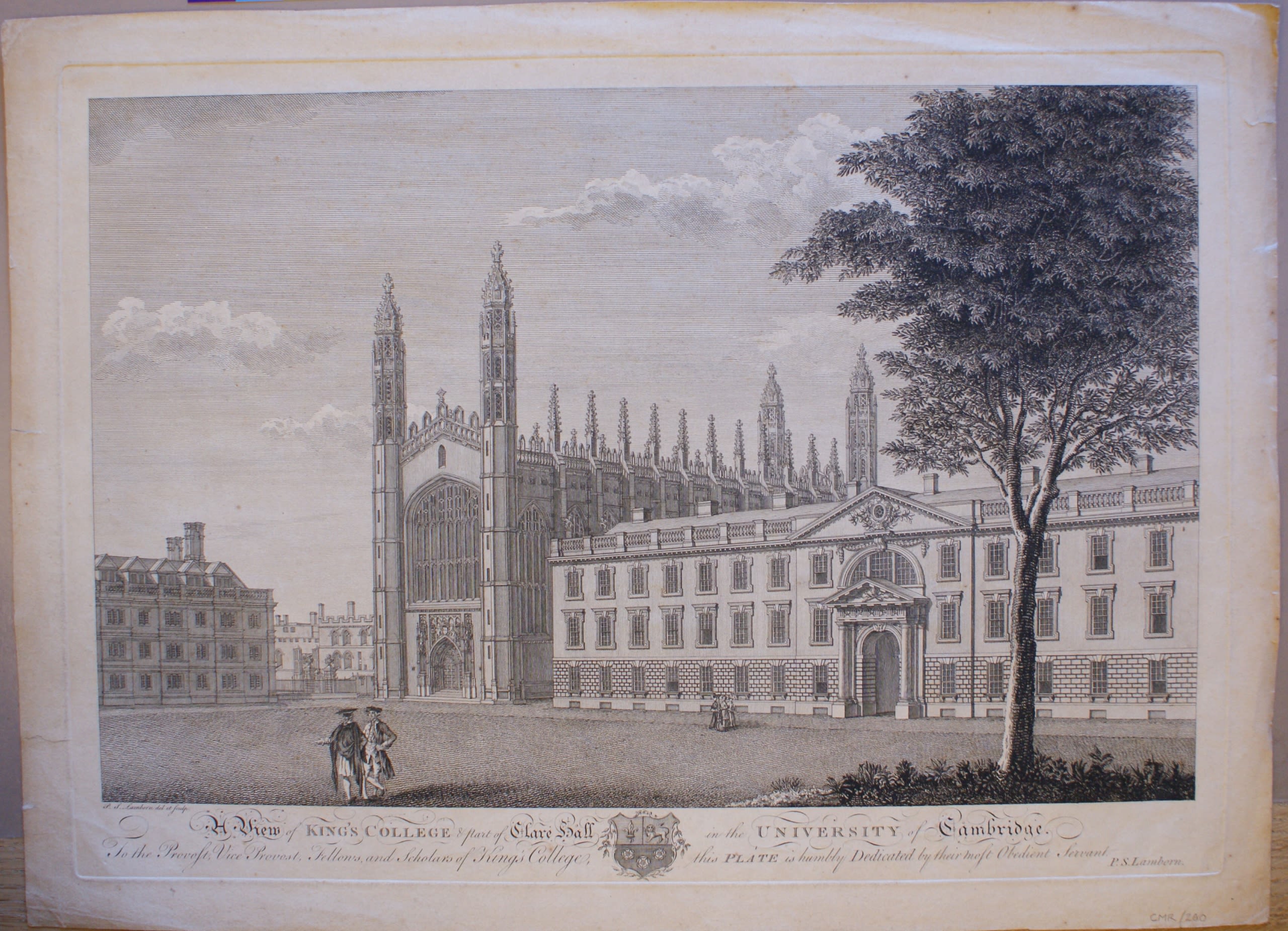
Architect Nicholas Hawksmoor prepared a scheme which included the Founder’s great court to the south of the Chapel; although the buildings were to be in Palladian and not the Gothic manner.
"The Generall Plan of King's College" by James Gibbs (KCD-0284)
"The Generall Plan of King's College" by James Gibbs (KCD-0284)
On 8 May 1714 the Provost and Fellows confirmed the continuation of the Founder’s design, and by the end of the year a building fund had been established, with a number of Fellows donating. However further delays followed and when the project was eventually put in hand, it was to a new design by the influential architect James Gibbs (who also designed the University Senate House).
A list of benefactors to the new building in 1724
A list of benefactors to the new building in 1724
Gibbs’ scheme was for three buildings, which would have formed a substantial courtyard to the south of the Chapel. The foundation stone of the west range – the only part of the scheme to be completed - was laid on 25 March 1724, using the Chapel stone left behind in 1461; and the building began to be occupied in the summer of 1732.
Words from an anthem by Thomas Tudway for the anniversary of the dedication to King's College Chapel and laying of the College's Foundation stone, 1724 (GIB-005-1)
Words from an anthem by Thomas Tudway for the anniversary of the dedication to King's College Chapel and laying of the College's Foundation stone, 1724 (GIB-005-1)
The most beautiful College set I knew as well as the best-beloved…
One room, crimson papered, looked onto the Front Court through the great semi-circular window.
EM Forster describing Goldsworthy Lowes Dickinson’s room in G5
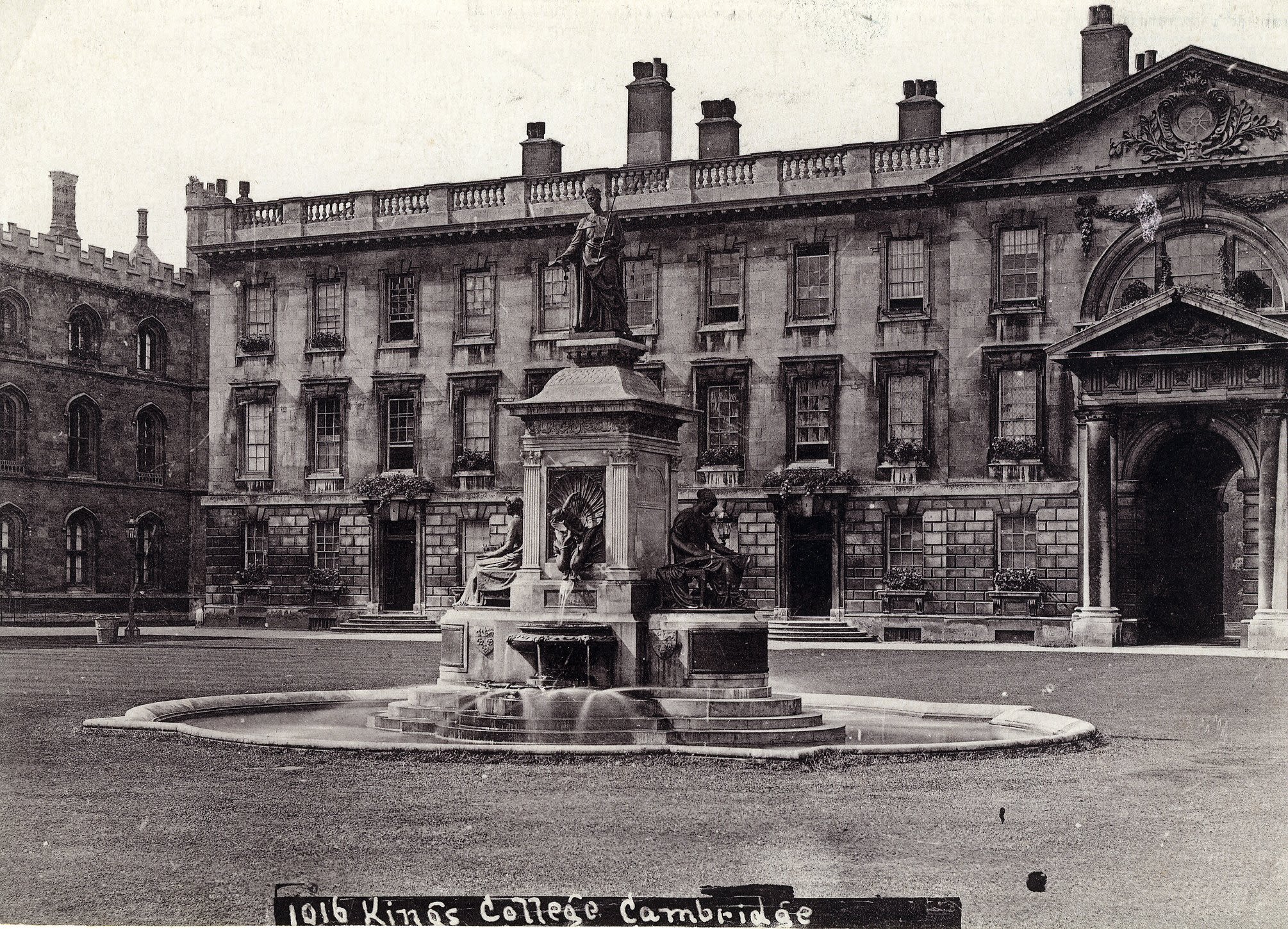
Since the first occupants arrived in the summer of 1732, the four staircases in Gibbs – E, F, G and H – have been home to generations of Fellows and students, including many of King’s most notable (and often eccentric) members.
Some notable occupants of Gibbs include:
The poet Rupert Brooke was in E1 from 1907 to 1908; Phil Vincent, founder of Vincent Motorcycles, was in E2 (now the Development Director’s office) in 1929, and Nobel Prize-winning biologist Sydney Brenner lived in E6 and then E2 in the 1960s.
Dean Eric Milner-White, who devised the Festival of Nine Lessons and Carols, occupied F1 between 1904 and 1933, and David Willcocks, Director of Music, was a long-time occupant of F5 from 1958. In the 1920s physiologist Hamilton Hartridge, finding his room in F3 full of bats, stretched silk threads across the room, turned off the lights, noted the bats’ evasive tactics and suggested that it was done by echolocation; sadly he didn’t publish his findings, and it fell to two Harvard scholars to perform and publish conclusive experiments in the late 1930s.
The evangelical preacher Charles Simeon lived in G5, above the arch in Gibbs, in the early 1820s (and had the bridge over the Cam moved to its current position as he thought it would improve his view); EM Forster’s good friend Goldsworthy Lowes Dickinson had the same room from 1913 to 1928.
Ghost story writer MR James lived in H5 for nine years before he moved into the Provost’s Lodge in 1905; Ludwig Wittgenstein threatened Karl Popper with a poker in H3 in 1946; and Stephen Cleobury, King’s Director of Music for 37 years, occupied H1 from 1987 to 2019.
Rupert Brooke in uniform (RCB-Ph-262)
Rupert Brooke in uniform (RCB-Ph-262)
Reverend Charles Simeon, Fellow of King's (KCAC-1-4-Simeon-1)
Reverend Charles Simeon, Fellow of King's (KCAC-1-4-Simeon-1)
Carrie Humphrey © Jooney Woodward 2023. Photographed for '50 Portraits - An Exhibition'
Carrie Humphrey © Jooney Woodward 2023. Photographed for '50 Portraits - An Exhibition'
Gibbs is in many ways the working heart of King’s. It has housed disruptive and innovative thinkers over the years; but it is also home to a number of the College’s administrative offices and is where King’s Fellows research and teach, in their own rooms and in shared space for supervisions and larger groups.
It brings together classicists and biochemists, mathematicians and historians, who can do their best work in rooms away from corridors and external noise; and provide teaching in unique, open and beautiful spaces conducive to the greatest thinking.
In Gibbs today, Professor John Dunn in E6 is applying a historical perspective to modern political theory; Professor Charlie Loke and Professor Ashley Moffett share a set on G staircase, working on aspects of the immunology of human reproduction; leading anthropologist Professor Dame Carrie Humphrey is on E staircase, and social anthropologist Dr Perveez Mody on G; and Professor Nicky Zeeman and Dr Laura Davies study and teach English Literature in a shared set on G Staircase.
The Turing Room in E basement formerly housed the computer room and is now home to the King's Entrepreneurship Lab, co-directed by Dr Kamiar Mohaddes and Professor Thomas Roulet, supporting students who want to explore careers in innovation, entrepreneurship and business.
Since its completion the College has carried out various works to repair and update the building and its rooms.
Gas lighting was supplied in 1846, water closets installed in 1849 and 1856, running water in 1860, telephones in 1886, and drains in 1896. New, lower chimneys were installed in 1913, boilers for Chapel heating were fitted in the Gibbs basement in 1924, and lavatories were proposed in 1938; but not installed until 1954 (along with central heating for the Gibbs building itself). It underwent major repairs due to death watch beetle damage throughout the 1930s, received a new Westmorland slate roof in 1957 and saw the installation of the Turing computer room in 1986, now the location for the King’s E-Lab. Part of the white Portland stone façade was cleaned in 1991, and the entire outside cleaned in 2016.
Gibbs was designated a Grade I listed building in 1950. It now needs fundamental conservation, restoration and renewal to be made ready for the future.
‘The Gibbs Building is a master-work of architecture, of cool and elegant design by one of the greatest architects of 18th century Britain, James Gibbs. Its physical fabric is an exalted exercise in skilful craftsmanship and notable materials. But it is not only a place of beauty. It is a place of never-ceasing hospitality, of warm welcome, of lives led with a passion for ‘making human lives better’ through research, innovation and – most of all – the exercise of good and civilised conversation.’
The Gibbs 300th anniversary challenge
Gibbs is vital to King’s, and the project is one of the College’s current highest priorities. The project to renew and restore it will cost in the region of £25 million.
To kickstart the appeal for Gibbs, an alumnus offered a £1 million pledge to establish a matching gift fund - the Gibbs 300th Anniversary Fund – to double gifts given over the course of 2024 up to a total of £1 million.
Donors to Gibbs will be recognised within the building, and significant gifts may offer naming opportunities.
Funding will enable the building’s repair and conservation, refurbishment of the four staircases and Fellows’ and other rooms and the basement areas, and critical thermal upgrade work and energy efficiency improvements, alongside improved access.
King's is committed to making its buildings, old and new, as sustainable as possible. The internal improvements to Gibbs to make it fit for the 21st century and beyond could ultimately make an even greater impact on reducing the College's carbon footprint than the installation of the solar panels on the chapel roof.
Learn more about how you can support the campaign for Gibbs
‘I came up for interview on a cold and misty day in November 1962. Having spent the night in a room in the ‘Drain’ (subsequently demolished when the Keynes building was erected), I was interviewed the next day in the Gibbs Building by the Senior Tutor, John Raven. I remember nothing of the interview, except for the fact that I had been overwhelmed by the beauty of the buildings, and the almost tangible sense of 500 years of learning that emanated from the College. I desperately wanted to be accepted.’
Tony Lonton
(KC 1963)
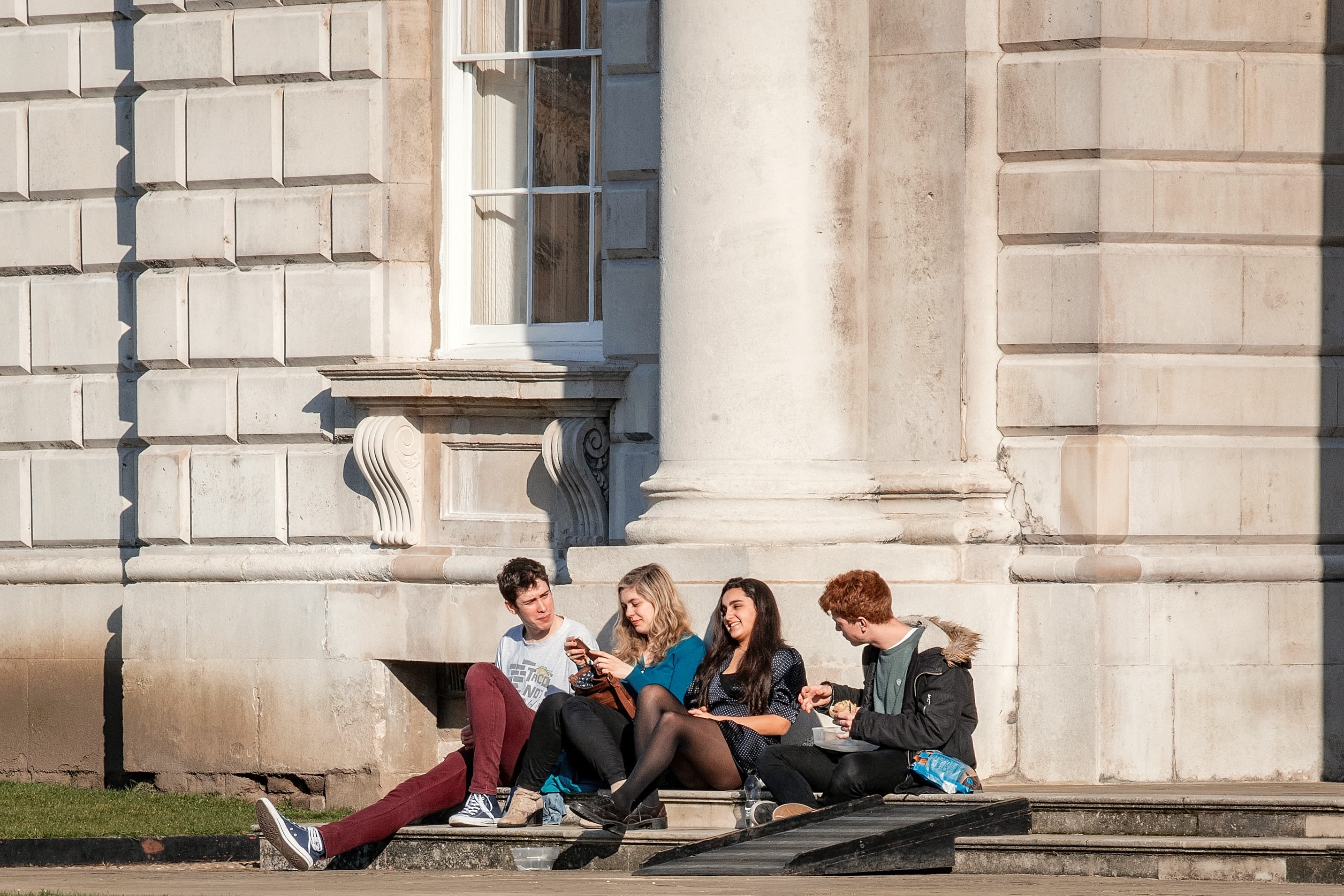

Alumni memories
As part of the 300th anniversary celebrations, we’re inviting alumni to share memories of Gibbs. To add yours, email us at communications@kings.cam.ac.uk
‘I was in rooms on the top floor on the staircase closest to the Chapel. I shared these wonderful rooms with Julian Grenfell from 1958 to 1959, my final year. Glorious experience… Immediately below were the rooms of Michael Jaffe, the world famous Rubens expert, and on the ground floor were the rooms of Nicholas Kaldor – my tutor! Very convenient!’
David Howell (Lord Howell of Guildford) (KC 1956)
‘I came up in 1953 and Gibbs was the site for many supervisions: Patrick Wilkinson, Geoffrey Lloyd (then only a research student) and Frank Adcock. Visits to Adcock’s rooms were notable for the weekly Greek play readings – it was a very good way of studying a lot of plays quite painlessly.
The high spot, literally, was the rooms over the arch, then occupied by Boris Ord, the organist. I only ever went there once. I had treated myself to the Long Vac term in my third year, and he held a party for all the undergraduates who were up. A memorable musical evening.’
Alan Hakim (KC 1953)
‘Down at the other end of Gibbs was the computer room – I can’t remember whether it was called the Turing room then. There were only two computers. One was bookable for two-hour slots, while the other was first-come first-served. For a week or so when I was working on my final-year dissertation I used to get up at 4.30 to bag a computer, and stay there until Choir practice started at 4.10, sustained by food brought to me by my girlfriend.’
Jason James (KC 1983; Chorister 1973-78)
‘I was a Classics undergraduate between 1957 and 1960. During that time, I had many tutorial sessions in Gibbs with John Raven and Patrick Wilkinson, benefiting enormously from their profound scholarship and kindly patience…’
Nigel Wenban-Smith (KC 1957)
‘One time when I was ill in bed and the doctor paid me a visit, he spotted a picture of Gibbs on my bedroom wall. ‘Ah yes,’ he said, ‘we used to drive golf balls over Gibbs and try to reach the river!’
Colin Garrett (KC 1961)
‘Ah, Gibbs! In our third year a number of us were good friends with Mark Lancaster (King’s Artist in Residence from 1968 to 1970) and we spent quite a bit of time up in the big room, talking and admiring his paintings.’
Howard Gannaway (KC 1966)
‘The Gibbs Building is one of my first ever memories of Cambridge, on a cold, dark, foggy and wet December day back in 1990 when I did my interviews for a place to do Maths at King’s. There were two interviews, [and] I recall finding them fun - I just love talking about maths. Ten months later I was an undergraduate at King’s.
In one of the basement rooms of Gibbs was the computer room; the only place that had computers at that time. This was the first time I came across the concept of email. I used to enjoy going there and playing Risk on the Apple Macintoshes - back when Apple was just starting to develop a presence and compete with IBM. Very few people had their own computers - you had to go to this special room to access one.’
Matthew Wood (KC 1991)
‘Adrian Cowell and I were the last undergraduates to live there, in H6, top floor next to the Chapel. In the very dry summer of 1959 you could see the foundations of medieval Cambridge on the back lawn, a paler brown in the brown grass. There appeared to be a street, lined with buildings, from the ‘Jumbo’ arch straight to the river and what looked like a bridge. The impression of the old wooden bell tower just west of the Chapel was clear: a big square with overlapping corners where I suppose the buttresses were.
Michael Jaffe, later Director of the Fitzwilliam Museum, had the set below us and hung the red-walled staircase with his pictures. He was constantly complaining about ‘elephants upstairs’; our activities made his great guilded chandelier wave its arms.’
Hugh Johnson (KC 1957)
'One day in late May 1969 a group of Kingsmen gather at the invitation of Mark Lancaster (King’s Artist in Residence from 1968 to 1970), in his fine room in Gibbs, on the second floor above the central archway. Mark wants us to hear a new record. Each of us finds a place on the floor. The music which booms out of the speakers would have shocked previous occupants of the building. It is the overture to Tommy, a double album by The Who. Not an academic experience, true, or a work of genius; more of ‘a blast’. Still, by the end of Tommy we have learned that thanks to the composer’s vision, the band’s dedication, the French horn, the vocalist’s range – and the far-fetched plot – ‘rock opera’ is no longer entirely a contradiction in terms. The Artist in Residence has done an artist’s job, helping to ‘take the mind where minds can’t usually go’.'
M I Waley (KC 1966)
'Abiding memories are made by singular experiences. In 1966, in my first year at King’s, I found myself in an upper floor of the Gibbs Building at the Chapel end overlooking the Front Court. The sun was flooding the lawn. I was sitting in the window seat with the windows wide open, listening to Sydney Brenner recounting his work in elucidating the structure of the building blocks of life, while the sounds of the Verdi Requiem echoed out from the Chapel. For a lad from a northern grammar school this seemed like heaven!'
Ralph Pickles (KC 1965)
'My memories of Gibbs are very vivid: starting with my interview in 1955 with the admissions tutor, Mr Wilkinson, when I stayed overnight in his set in Gibbs. How lucky I felt!
Towards the end of my first term the Chaplain, David Isitt, gave a party in his set in Gibbs at which the celebrated Red King flowed very freely and I struggled very hard to find my way by bike back to my digs at 11.30.
Finally, and most importantly, under the supervision of John Saltmarsh, I used the original Caslon and Garamond type to print small items on the 17th century press, and thereby felt so much part of a very special history of printing.'
Richard Martin (KC 1957)
‘Having had the good fortune to have navigated my way through two research projects elsewhere, I was a candidate to join a research team led by the emerging star educational psychologist [and Fellow of King’s] Dr Royston Lambert.
A political storm was brewing in the early-1960s in which one project was to be the destruction of private (Boarding) Schooling incubating an elite. A Commission was set up to explore ways in which the existing schools could be integrated within the State system. Royston Lambert established a two-year set of six studies of Boarding Education, based in the College's (then) new Research Centre. I was selected to run and deliver the study of English Girls' Boarding Schools.
The Research Centre was initially housed in rooms at the front of the College but soon I was allocated a superb "office" across King's Parade with windows looking straight across to the Chapel and to Gibbs' majestic building. Royston Lambert had a sumptuous set of rooms in Gibbs'; entering the main room one was immediately impressed by the polished grand piano, the plentiful collection of colourful Staffordshire pottery figures and the early Georgian paintings. It was said that Roy had discovered a previously unidentified Gainsborough… The demeanour of those who entered the apartment and the way in which they interacted somehow reflected the elegance of the rooms itself and its contents.’
Mallory Wober (KC 1954)



